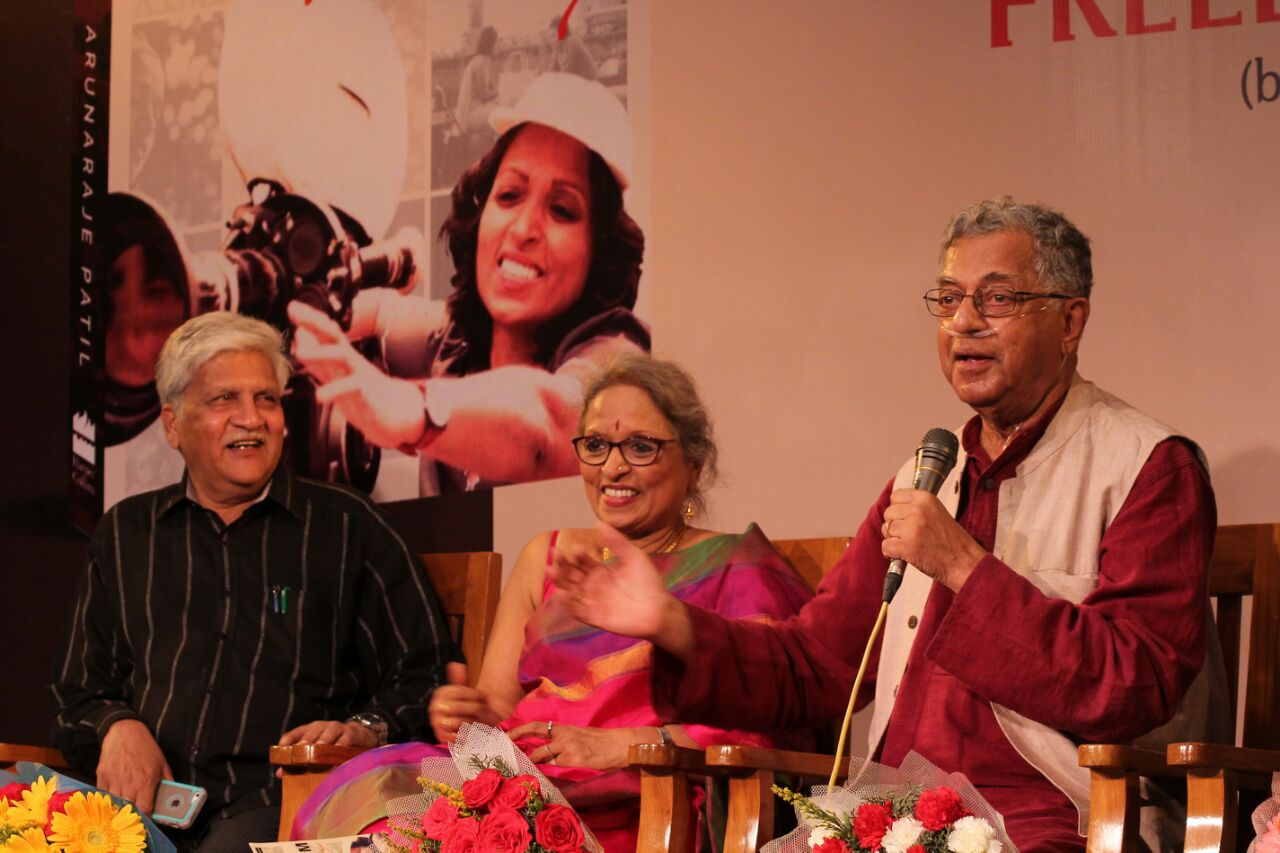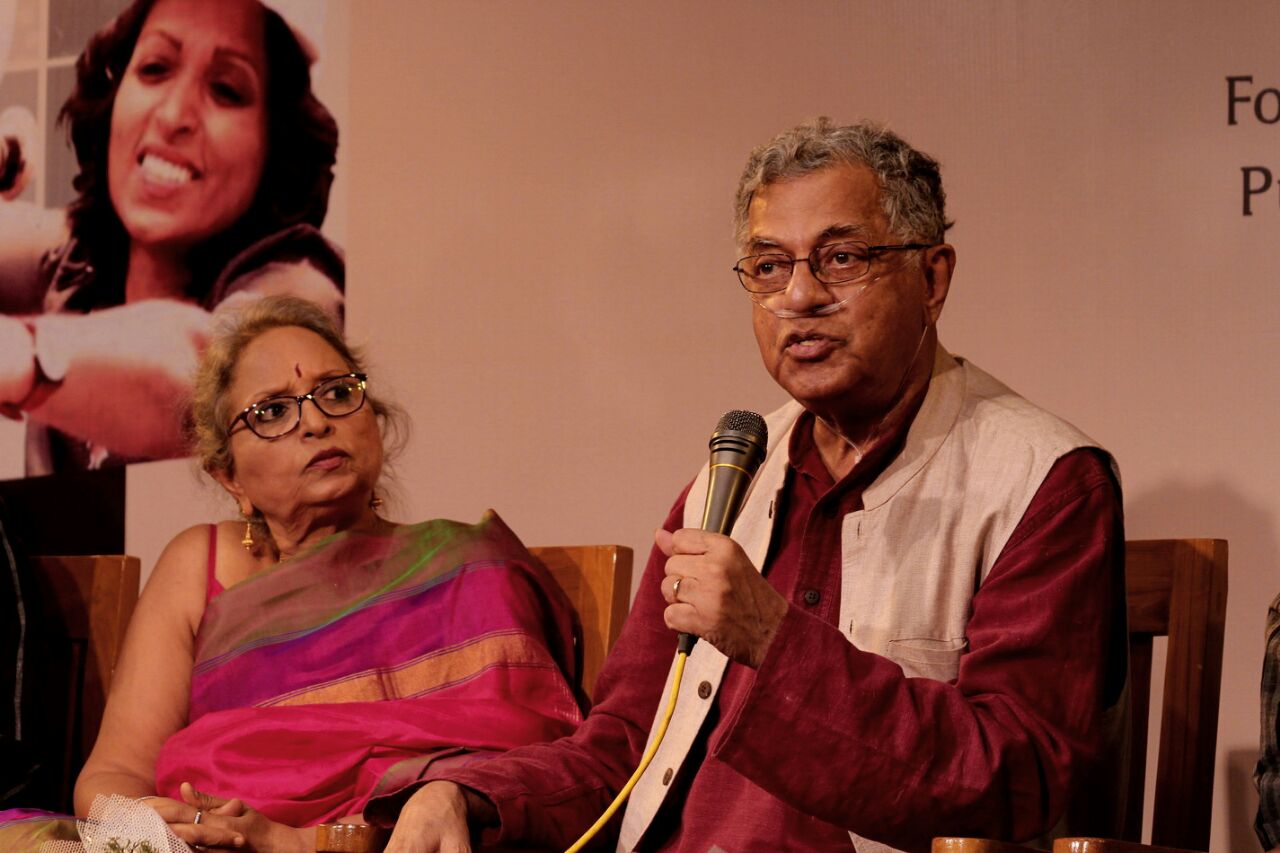It was 1971. Vikas Desai, my ex-husband, and I were completing a film at the Film & Television Institute of India in Pune when out of the blue we got a call from Bangalore. Girish Karnad had called us to edit Vamsha Vriksha (1972), his first directorial venture along with BV Karanth and but naturally, we were extremely excited by the offer. A few days later, unfortunately on the way to Mysore, we had a car accident which left me with broken legs and a badly damaged face with a broken nose.
We promptly informed Girish to take someone else to edit his film since I was in no shape to work then. But Girish and GV Iyer, his producer, decided to wait and what’s more, wait indefinitely which came both, as a surprise and shock for us. A couple of months later, I was still in no shape to go and was now wheel chair-bound, not knowing how and when my legs would heal, if they ever would. In spite of our repeated communication to them to go ahead with another editor, they still chose to wait! Now guilt had begun to set in and anyway tired of all the visitors who came to sympathize and feel sorry for my plight, we decided not to make Girish wait any longer and left for Mysore – wheel chair and all.
I still remember Girish’s horrified face when he saw me at Premier Studio with a mask on my face made of bandages, being helped out from the car to the wheel chair. But hats off to him, after the initial shock, he took it in his stride and arrangements were made so that I could have easy access by wheel chair to the editing room and the moviola. Thus began a long association and though we did not meet or interact frequently, I feel so saddened by his loss.
One thing Girish did not do while we edited his film was frequent the editing room which most anxious debuting directors would have done. This created a concern for us because we really did not know Girish or Karanth from before and we kept calling him to come and see what we had done.
One day he finally admitted that he was afraid to come – he had done what he had done during the filming and was actually afraid to see how it had turned out. Actually, it had turned out pretty fine except for some glitches which as a trained editor I could straighten out with some clever cutting but what was important was that that there was a story to tell in the material they had shot and shot it well enough to hold together. In fact, it turned out so well that the film got a National award for Girish and Karanth and we got a State award for the editing along with LV Sharada, who got it for Acting. But that was Girish –modest, self effacing and so down to earth in spite of all his accomplishments.
He had a great sense of humour and saw the absurdity of life and human existence. Often, he had us in splits because his articulation was so funny and so dead on, given his mastery of the language. One of his lead actors had a habit of raising her eyebrows high every time she responded to her co-actors lines. Girish had found it hard to control her and told us that he had wanted to draw a line around the room on the walls, saying ‘No eyebrows to go up beyond this point!’ Fortunately, I found a solution to that while editing and Girish was mighty pleased.
The staff and other technicians in Premier studio and the Kannada film industry were not very happy that Girish had called people from outside to work on his film. And that too a girl! They kept saying that filmmaking cannot be taught in a school or institute etc. and what can these people do that, that we can’t! With this attitude in the background, things were bound to go wrong sooner or later.
The final sound work on the film – music and effects recording and re-recording of the film – was done in Chennai (Madras as it was known those days). When we reached Madras, we discovered that the re-recording print was out sync. The laboratory at Premier studio had printed the whole dialogue print out of sync. This was a huge problem and could cost the producer big money to make another print. What followed was a blame game. I was so clear that we were not at fault and I declared that if the mistake was mine, I would pay for it. Soon, it was identified that the mistake had been done by the laboratory, which had not followed basic international standards in making a married print. We found a solution to the problem in coordination with the recordist Mohan Sundaram, I think, Vijaya Vauhini studios.
Being technically sound had paid off and throughout this fracas, Girish stood by us ignoring all the barbs. He often said that he envied Vikas and me for having been at the Film Institute. He even asked us if they would take him but we had to disappoint him by telling him that he was over age according to the then admission rules. Life is so strange that a few years later it catapulted him into the Director’s chair at The FTII and still further down as a Chairman of the FTII society too.
In Madras, we got to meet many of his friends. He was part of a play group called the Madras Players. He was such a vibrant live-wire brimming with ideas. It was not surprising that he had a great female fan following and there were many girls crazy about him. But Girish was balanced and we never saw him lose his head in any situation, good or bad. In fact, on hindsight, if I may say so, the four principles of Greek philosophy which the stoics hold dear could be applied to him – prudence, justice, fortitude and temperance or wisdom, morality, courage and moderation. He stood for what he believed in and held his own until the end.
I had the opportunity to edit his documentary too on DR Bendre, poet extraordinaire from Karnataka.. Girish looked up to the icon and managed to bring out the the persona of Bendre as a simple humble man with a brilliant creative mind. Girish was very meticulous and industrious too. I don’t remember him taking any short cuts. Another thing I remember is the letters he wrote. His handwriting was very neat and tidy and it was a pleasure to read his letters, some of which I still have.
The last time I met him was a about a couple of years ago, when I launched my autobiography, Freedom: My Story in Bengaluru. A thorough professional, he had come prepared having read my book. He had an amazing memory and as we walked down memory lane he recreated the history of Kannada cinema. He was there and in his element though he was on oxygen and had to carry his kit strapped to his body. He was unstoppable in anything he took on or believed in – like living 100%!
All I can say now is they don’t make them like him nowadays!



